Search
Remove Ads
Advertisement
Summary 
Loading AI-generated summary based on World History Encyclopedia articles ...
Search Results
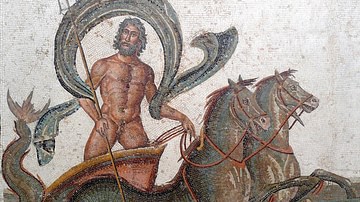
Definition
Neptune
Neptune is the Roman god of the sea and the Roman equivalent of the Greek god Poseidon. He was originally a god of fresh water and became associated with Poseidon early on in Roman history. He lives in a golden palace at the bottom of the...
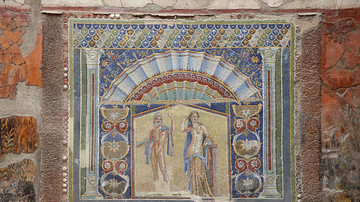
Image
Neptune & Amphitrite Mosaic, Herculaneum
Mosaic decoration depicting the sea god Neptune with his wife Amphitrite. Summer triclinium of the House of Neptune and Amphitrite, Herculaneum.
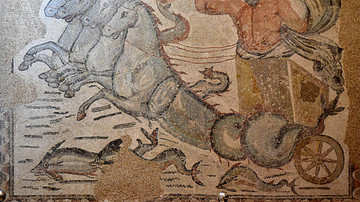
Image
Neptune in his Chariot Mosaic from Timgad
Roman mosaic depicting Neptune in his chariot. The god brandishes his trident as he stands in his chariot, which is drawn by four sea horses. From the East Baths of Thamugadi (Timgad), dated to the 3rd century CE.
Timgad Museum, Algeria.

Image
Triumph of Neptune, Sousse
A Roman mosaic depicting the sea god Neptune being pulled in a chariot by two hippocampi. From Sousse, Tunisia. 3rd Century CE. (Sousse Archaeological Museum)
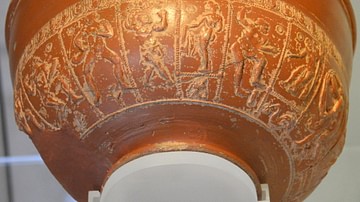
Image
Bowl with Neptune, Inveresk
Neptune was god of the oceans, freshwater, and seas (he was the counterpart of the Greek god Posiedon). The outer surface of this bowl was decorated with Neptune and a merman on his left and dolphin and Jupiter to his right. From Inveresk...
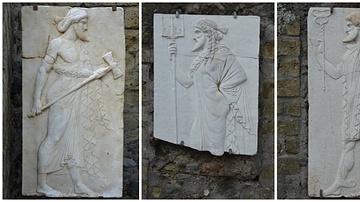
Image
Vulcan, Neptune, Mercury and Minerva, Herculaneum
Copies of Neo-Attic reliefs in the Sacred Area of Herculaneum depicting the four gods Vulcan, Neptune, Mercury and Minerva to whom a temple was dedicated.
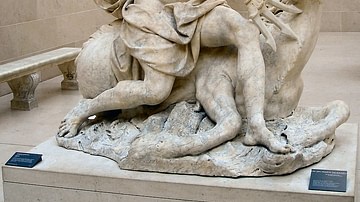
Image
Antoine Coysevox's Neptune
Antoine Coysevox's Neptune in the Louvre (Paris, France), 1705.
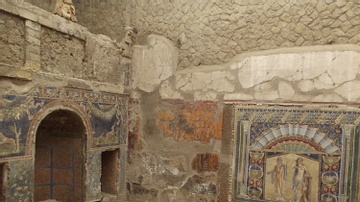
Image
Villa of Neptune and Amphitrite, Herculaneum
Villa of Neptune and Amphitrite, Herculaneum. The famous wall mosaic and its subjects gives the villa its name.
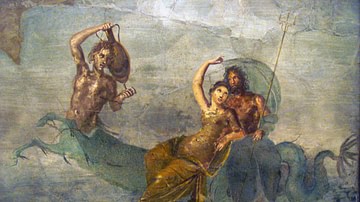
Image
Centaur, Salacia and Neptune
Ancient Roman fresco (50-79 CE), Pompeii, Italy.
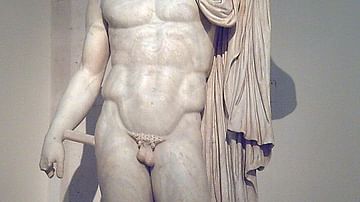
Image
Colossal-Type Statue of Neptune
Probably sculpted in a workshop in Aphrodisias (Asia Minor), it was at Palaemon's sanctuary in Isthmia (near Corinth), where it was described by Pausanias (II, 2, 1) in the 2nd century CE. It is an important sample of the Roman Empire's classicism...